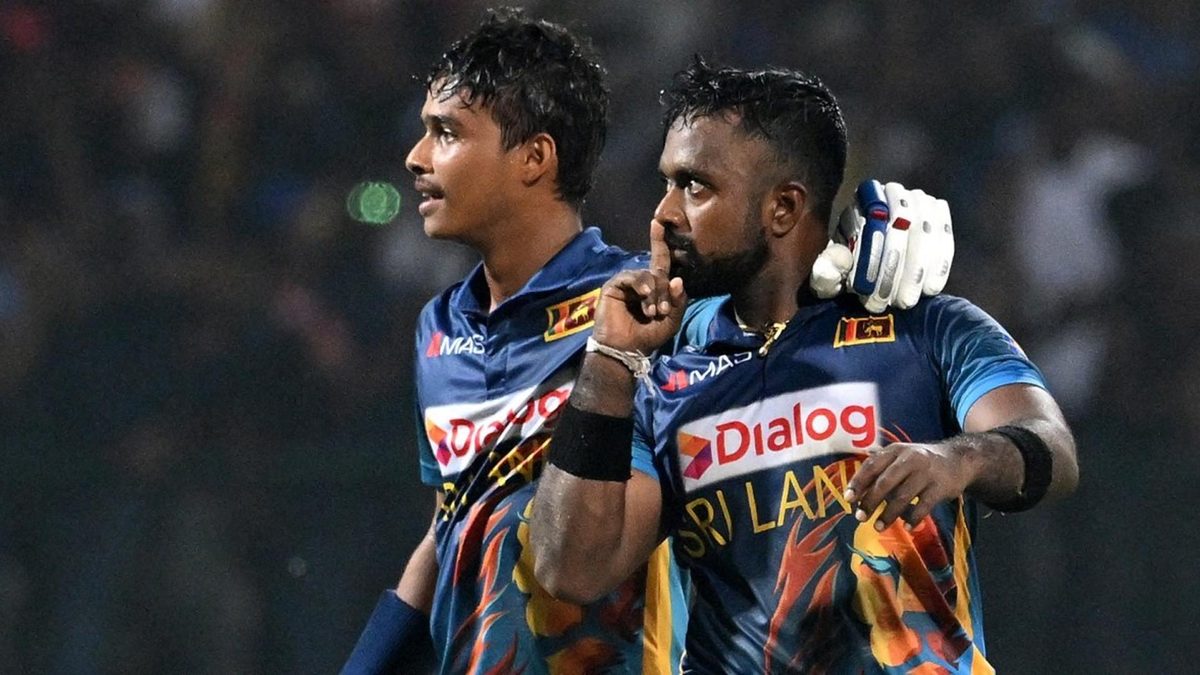
Sri Lanka adopted a T20-inspired approach to pull off a memorable chase against Afghanistan to keep their hopes of direct qualification for the 2023 World Cup alive.
Buoyed by Ibrahim Zadran’s 162, Afghanistan posted 313-8 last night in Pallekele. Only once had a team chased a larger total successfully on Sri Lankan soil until then – Zimbabwe, five years ago, against Sri Lanka in Galle – and the 300-mark had been breached only twice more. In other words, Sri Lanka were chasing history.
With West Indies and Ireland still above Sri Lanka in the ODI World Cup Super League standings and South Africa hot on their heels, Sri Lanka needed to win the series finale to boost their chances of avoiding having to play the Qualifiers for a 2023 World Cup berth. Unfortunately, they were up against a Rashid Khan-shaped problem.
Sri Lanka were 91-0 after 16 overs when Rashid came on to bowl. Pathum Nissanka (35) and Kusal Mendis (67 in 61 balls) were running away with the match, but they stuck to protocol by playing out Rashid’s first over. At the end, Mohammad Nabi dismissed Mendis, which obviously meant that Sri Lanka became even more cautious against Rashid, playing him from deep inside the crease, presumably to counteract the googly.
It did not work. Rashid altered his length and pitched the ball up and his wrong’un dislodged Nissanka’s stumps. In his next over, another brilliant ball fizzed in to bowl Dhananjaya de Silva. Dinesh Chandimal survived a leg-before appeal (he, too, failed to read the googly), Afghanistan did not review, and Sri Lanka were 121-3 after 25 overs. Rashid got a break after 5-0-14-2. He had halted Sri Lanka’s progress for the time. The asking rate was 7.72 – achievable, but there were two new batters at the crease.
By the time Rashid returned, Sri Lanka needed 127 in 96 balls. Mohammad Nabi was bowled out, but Mujeeb Ur Rahman – the youngest of the famed spin triumvirate – had four overs left. Fazalhaq Farooqi also had five, which left two overs. For this, they had to choose from debutant left-arm wrist-spinner Noor Ahmad, whom Sri Lanka had hit out of the attack, and Gulbadin Naib, who had bowled 10 overs only seven times in 74 ODIs.
In other words, Sri Lanka had two overs to target. To counter that, Afghanistan had five overs of Rashid. When Rashid’s next over went for six, Hashmatullah Shahidi decided to get one of the two ‘weak’ overs out of the way: Gulbadin conceded nine. Sri Lanka needed 112 in 84 – in other words, eight an over.
Rashid conceded 13 in his two overs. Farooqi replaced him, and with Mujeeb at the other end, runs came. Sri Lanka needed 73 in 54 balls. Rashid returned.
It took him four balls. Dasun Shanaka (43 in 44 balls) did read the length right, but the ball turned enough to bowl him through the gate. Rashid conceded only four, and taking advantage, Mujeeb sneaked in a four-run over too. Wanindu Hasaranga under-edged the first ball of the next over, and was caught behind. Three came off that over.
Dunith Wellalage walked out. At the other end was Charith Asalanka, who had stretched his double-figure streak in ODIs to 16 innings (in a career of 18). Until last night, he averaged almost 42 and struck at 88. Earlier this year, he had scored a dazzling hundred against Australia in Premadasa. Now, with 62 to get in six overs, he decided to go after Mujeeb, lofting him twice over long-on for six.
Rashid still had another over, but Hashmatullah had to hold him back, for Farooqi needed to bowl three overs out of five. Farooqi conceded seven. Sri Lanka needed 40 in four overs.
Now Hashmatullah summoned Rashid. At this stage, Sri Lanka had three options: both could go after him; Wellalage could (his wicket would hurt them less); or play out Rashid. The last involved risk, because it would potentially mean leaving too many for the last three overs. In another era, a team would not have risked it in an ODI, but T20 cricket has made every target achievable. They could perhaps have afforded to play out a maiden over.
Yet, they opted for it. One, one, dot, one, dot, dot went the over. Sri Lanka needed 37 in three overs – but they had seen off Rashid, and Afghanistan still needed to bowl Gulbadin once.
Farooqi responded with an excellent over at this point. He kept Sri Lanka to four singles in five balls, but Asalanka found the fence with his cover-drive off the last. Twenty-nine from two overs, but Gulbadin had one more over to bowl.
Gulbadin’s initial plan was to make the Sri Lankans stretch outside off. He had to alter his plan by ending up bowling too wide, not once but twice in succession. Until this match, Wellalage had never hit a seamer for a boundary in ODIs, but now he hit three, with a ramp and a semi-pull to fine-leg, and a straight drive. He also retained strike.
Farooqi had to defend 13. This, he failed to do. There was chance even after Wellalage lofted the first ball over mid-wicket for six – Farooqi brought it down to six in three balls – but the fourth ball was too short, and Asalanka sent it over the square-leg fence.
The decision to play out Rashid when Sri Lanka needed 10 runs per over paid off.








